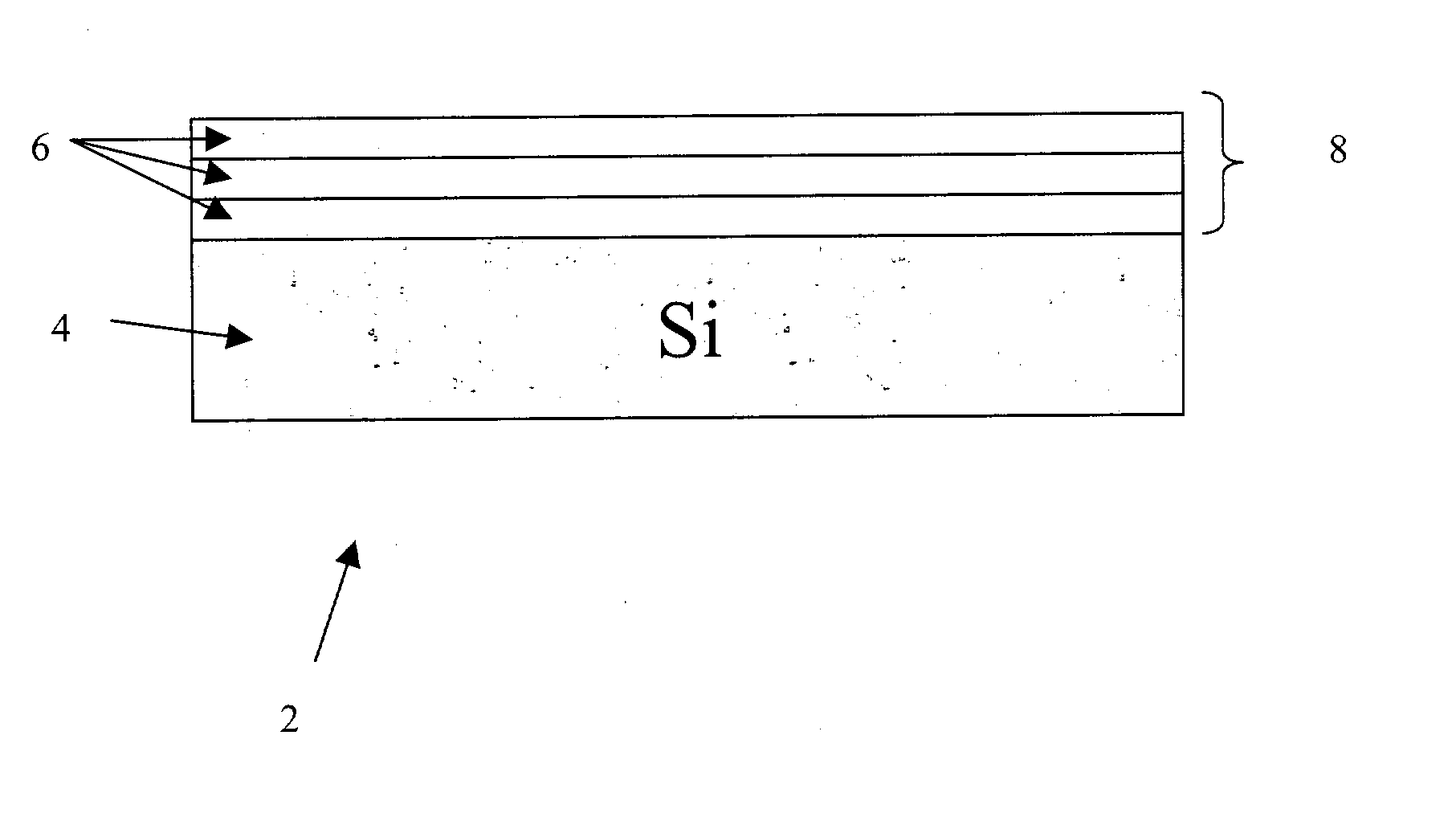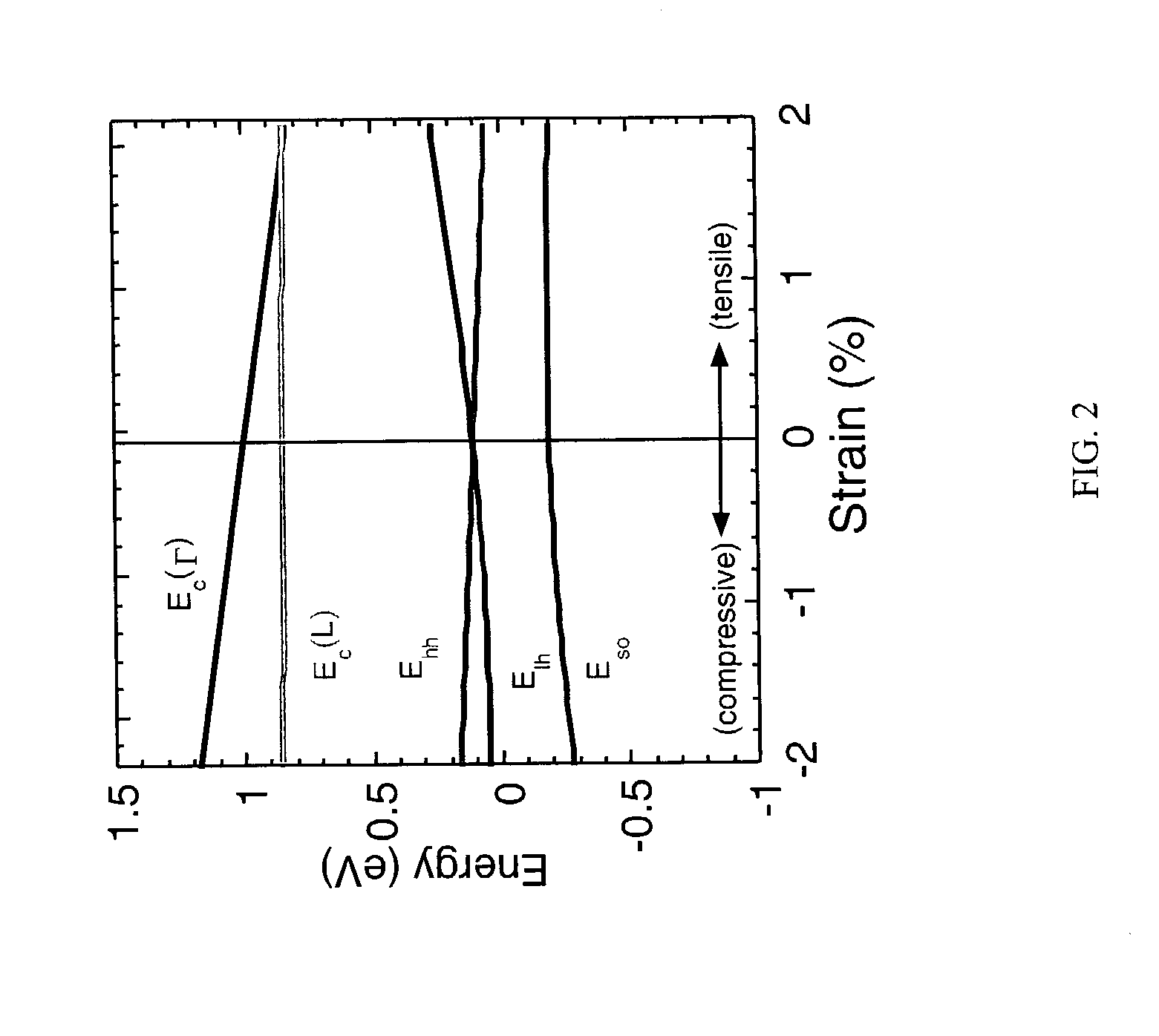Ge photodetectors
a technology of photodetectors and detectors, applied in the field of photodetectors, can solve the problems of difficult implementation of ingaas photodetectors, and achieve the effect of efficient operation and efficient operation
- Summary
- Abstract
- Description
- Claims
- Application Information
AI Technical Summary
Benefits of technology
Problems solved by technology
Method used
Image
Examples
Embodiment Construction
[0015] Ge is an indirect semiconductor whose bandgap is 0.667 eV corresponding to 1850 nm. Because of indirect bandgap characteristics, the absorption coefficient is small, approximately 100 cm.sup.-1 depending on the wavelength. The direct bandgap of Ge is 0.8 eV corresponding to 1550 nm. Thus, the photodetector performance of Ge is marginally good in the C-band but, is poor in the L-band. To overcome the drawback of Ge, various attempts have been used, such as GeSn alloy, to decrease the bandgap.
[0016] One goal in Ge photodetectors is to shrink the bandgap to cover the C- and L-bands with high efficiency. The invention uses tensile strain to accomplish this task.
[0017] FIG. 1 is schematic block diagram illustrating the techniques used to create a Ge photodetector 2 using a tensile strained Ge layer 8. The Ge photodetector is formed on a Si wafer. This is ideal for realizing Si-based optoelectronic circuits as well as optical interconnection in Si-LSIs. In spite of a large lattice ...
PUM
 Login to View More
Login to View More Abstract
Description
Claims
Application Information
 Login to View More
Login to View More - R&D
- Intellectual Property
- Life Sciences
- Materials
- Tech Scout
- Unparalleled Data Quality
- Higher Quality Content
- 60% Fewer Hallucinations
Browse by: Latest US Patents, China's latest patents, Technical Efficacy Thesaurus, Application Domain, Technology Topic, Popular Technical Reports.
© 2025 PatSnap. All rights reserved.Legal|Privacy policy|Modern Slavery Act Transparency Statement|Sitemap|About US| Contact US: help@patsnap.com



